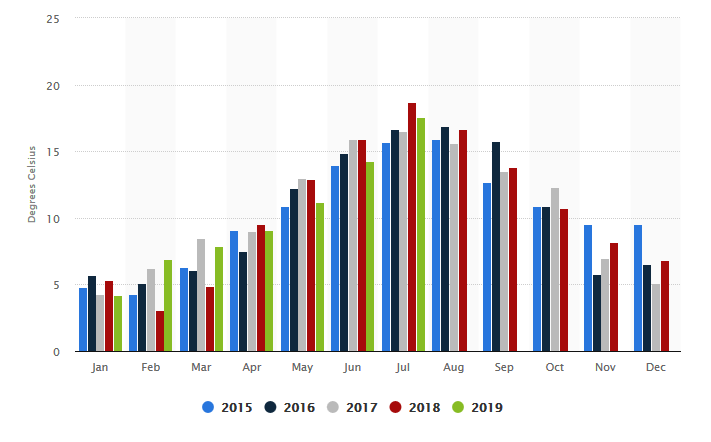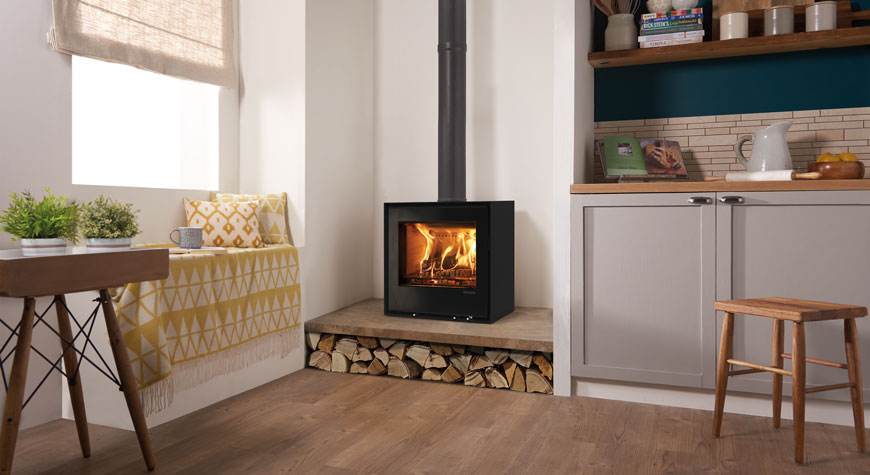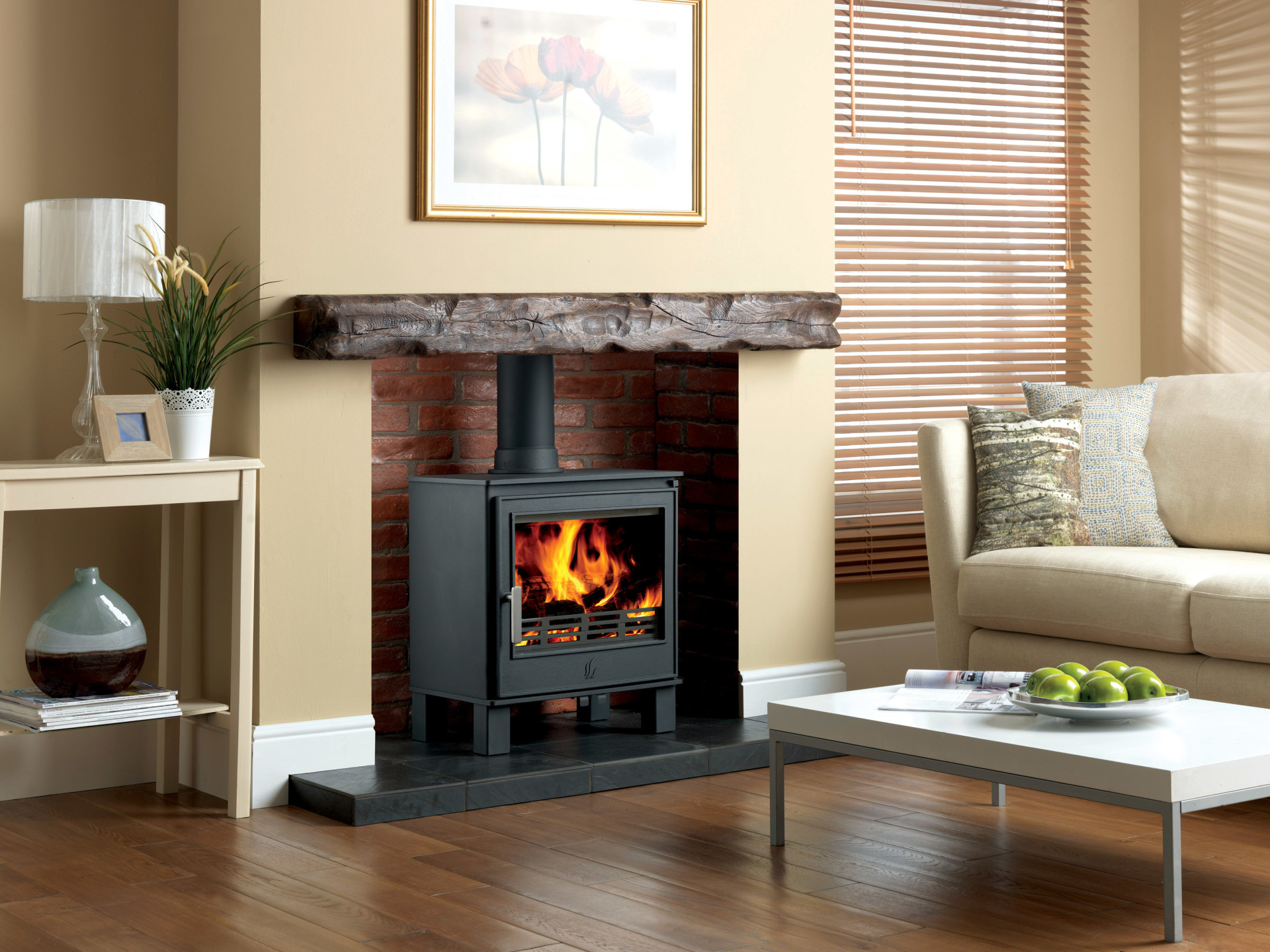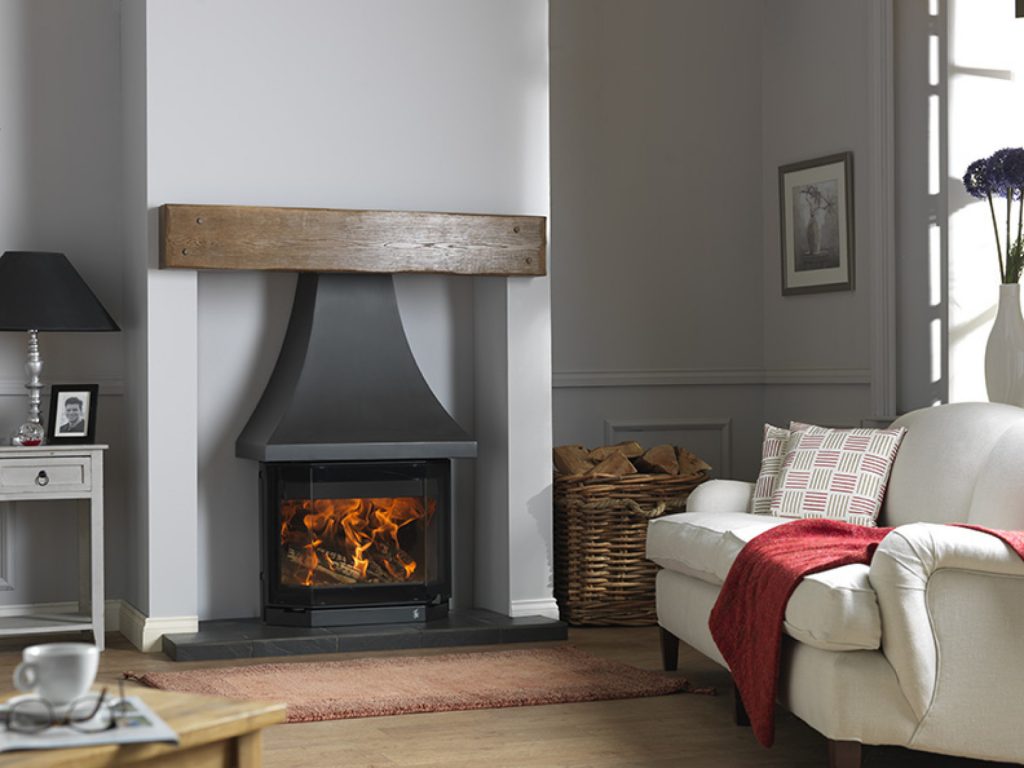The first thing to say is there is no set time/period during which you should use your wood-burning/multifuel stove. There are a lot of factors to consider with the most obvious being the weather. Due to climate warming, changing seasons or simply cyclical temperature changes across the globe, the start, end and duration of stove firing season has changed lately. So, when is it most popular to start using your wood-burning/multifuel stove?
September appears to be the most popular month
We carried out a straw poll on the Arbtalk forum and while only a small number of members responded, we found that around 67% of those who use stoves will start to light up again in September. This is when the summer comes to an end and the autumn begins with a significant change in weather, temperature and wind. As you will see below, there have been some significant variations in British monthly temperatures which tend to dictate when wood-burning/multifuel stoves are brought out of hibernation!

The changes between 2015 and July 2019 (the last available figures) show there are still definitive seasons in the UK but temperatures can vary significantly. The average temperature in September tends to vary between around 12°C to just over 15°C. So, if we use the same argument to guess when people might stop using their stoves each year, this would be any time between May and June. Who would have thought the average stove owner is still fired up as we approach the good old-fashioned British summer?
Maintaining and repairing your stove
If any parts need maintained or repaired then this is likely to happen between September and May as your wood-burning/multifuel stove is in full use. This is the time when the parts are exposed to significant temperatures often for prolonged periods of time. The constant heating and cooling will eventually lead to some general wear and tear of parts such as baffle plates, fire bricks and other components. It does however open your eyes as to how sturdy these machines are and how well manufactured to be able to accommodate such significant heating, cooling and a constant repeating of the process.
Check your seals
Even if your stove is firing on all cylinders and running at maximum capacity, there are still a number of issues to take into consideration. One of these is the stove door glass (and in some instances side glass panels) and the seals around them. Over time the seals will begin to dry and crack and heat will escape in an uncontrolled manner thereby reducing the efficiency of your machine. Many people may wonder if this is a real issue, surely heat escaping into the room is what you are after?

In reality this is a problem because the way in which a wood-burning/multifuel stove works is to build up to its optimum heat within the machine. Then this heat will be slowly radiated into the room in a controlled fashion over a long period of time. As the heat goes through the body of the stove and out into the room this creates that deep seated heat many people love. The escaping of heat through cracked seals around doors and glass viewing areas means your machine has to work harder to reach that optimum temperature. Also, the heat which is escaping is a different temperature and being radiated into the room in a very different manner.
Replacing cracked glass
If you have ever experienced cracked stove glass you would likely have been tempted to leave relatively minor cracks until they have widened somewhat. If there is no big gaping hole in your stove glass then surely this will not have a major impact on your stove?
As with seals, heat will escape in an uncontrolled manner through stove glass cracks whether on the door or perhaps side viewing areas. There is a similar scenario to the seals; the heat is escaping prematurely meaning more fuel is required to bring your stove up to optimum temperature. So, while you may be thinking you are saving yourself a few pounds by delaying the purchase of replacement glass until the “cracks are bigger” this is a false efficiency. As soon as you start to see visible cracks in your glass it should be replaced. The glass will already be impacting the efficiency of your stove prior to visible cracks emerging as there will be smaller ones which are not visible to the naked eye.
Clearing debris
There seems to be a common misconception amongst some stove owners that there is no need to clear debris out of your machine. It can be difficult to understand how a few ashes or debris in the corner of your stove can impact the creation of heat going forward. The simple fact is that wood-burning stoves and their multifuel counterparts perform best in a clean environment where there is no debris or ashes. This is waste product which cannot be burned, has no benefit to the burning process and is just using up space and absorbing heat. So, yes, it is very important that you clear the debris from your stove on a regular basis.
Fight the temptation to over burn
We have mentioned this on numerous occasions, the temptation to throw as many logs on your wood-burning stove as possible and create as much heat as you can. You will notice from your stove manufacturer’s guide that there is an optimum temperature at which any stove is most efficient. So how do you measure the temperature?

The best way to measure the temperature of your stove is to acquire a thermometer which you can fit to the flue pipe which exits your stove. This will give a very accurate reading of the temperature of the gases passing out of your stove and into the atmosphere. You will then be able to adjust the level of fuel used so that the temperature is within the boundaries of the manufacturer’s guidance.
When you over fuel your stove and the temperatures are too high this can lead to more wear and tear and other issues such as warped baffle plates. So, the idea of pumping as much heat out of your stove as possible is dangerous. Check the manufacturers guide and see what they recommend.
Summary
So, September appears to be the most popular month for bringing your stove out of hibernation and into the limelight. Of course, this will be very different if you use your stove to heat your water and radiators throughout the year. As you will see from the above graph, the most common period during which stoves are used tends to be between September and, looking at similar temperatures, May/June.
Before you prepare your stove to be fired up for the first time of the season, it is probably worthwhile giving it the once over, checking for wear and tear, cracks and broken seals. It is better for your stove and better for your pocket if it is running at maximum efficiency from the first firing!

